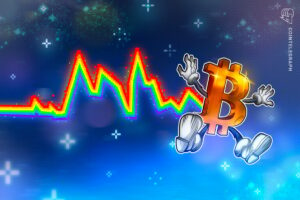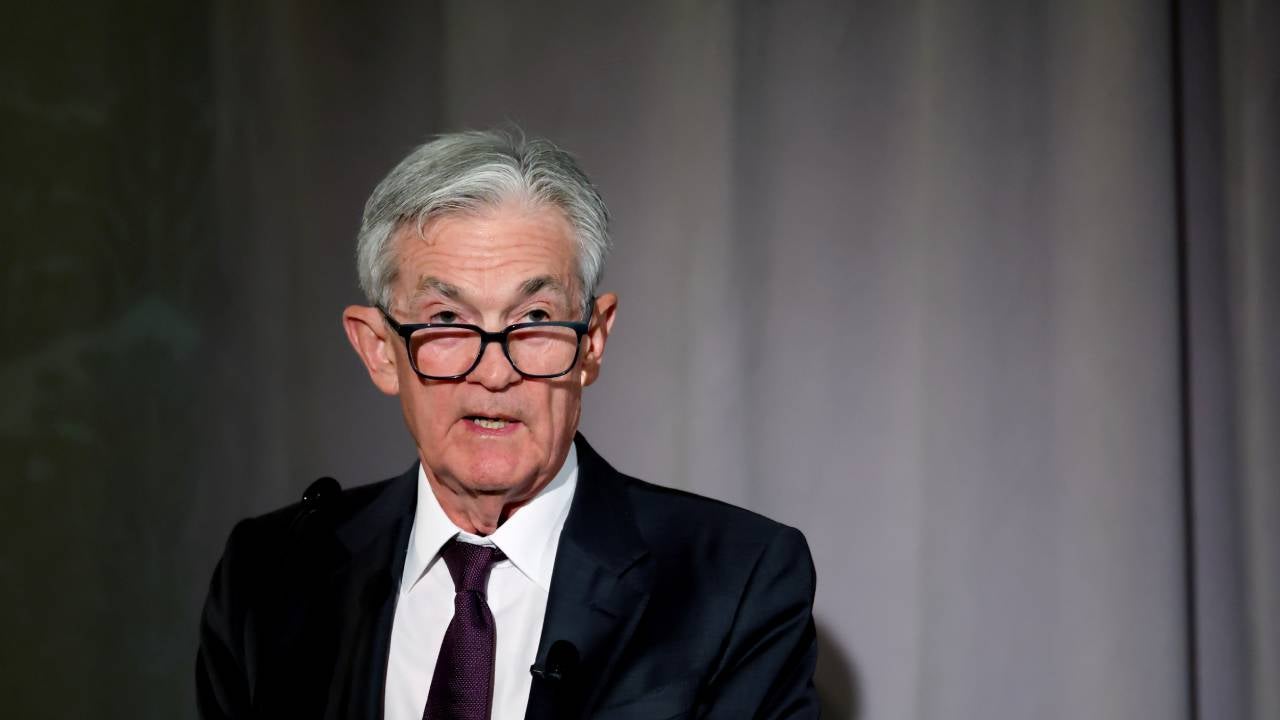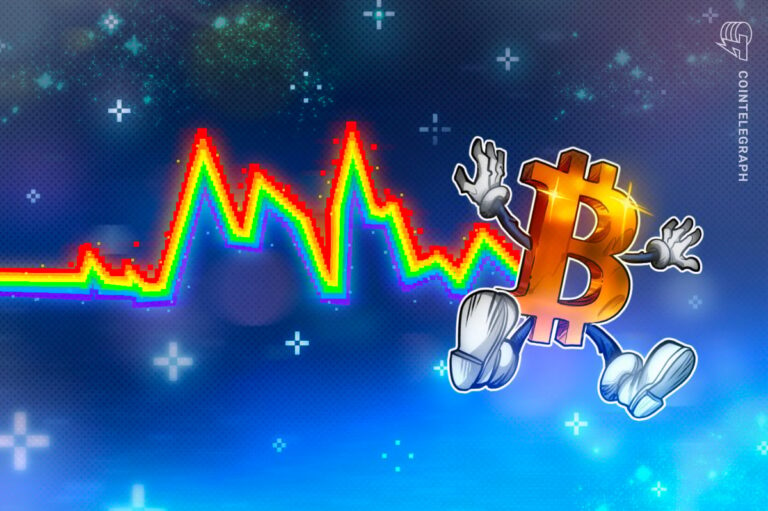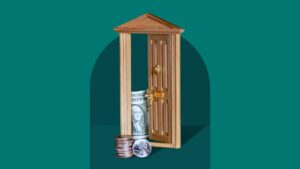The Federal Reserve announced that it’s keeping interest rates unaltered during its June 17-18 meeting, leaving the federal funds rate unchanged at a target range of 4.25 to 4.50 percent.
This marks the fourth consecutive meeting where the Fed decided to keep rates steady, even as the White House attempts to pressure the central bank to slash its benchmark rate.
Of primary concern for the Fed is inflation, which ticked up slightly in May, according to the latest reading from the Consumer Price Index. And with uncertainty still surrounding President Trump’s tariff plan — threatening to drive up prices even further — the Fed indicated that it’ll wait and see how the economy shakes out before making any movements.
“Even with inflation metrics having moved closer to the two percent target, the uncertainty about tariffs and their impact on inflation has kept the Fed on the sidelines,” says Greg McBride, CFA, Bankrate chief financial analyst, adding that inflation isn’t the Fed’s only concern, as cracks in the job market have forced the Fed to “pay attention to both sides of the price stability and full employment mandate.”
Here are the winners and losers of the Fed’s latest rate decision.
1. Borrowers
If you’re an existing borrower and don’t need to tap the market for money — say, you previously locked in a 30-year fixed-rate mortgage in 2021 or 2022 — it’s just the status quo for now. With relatively high rates, potential borrowers may not be able to access new credit, whether that’s credit cards (more later), student loans, personal loans, auto loans or whatever else you might need to borrow for.
The average interest rate on personal loans is 12.65 percent, as of June 11, according to a Bankrate analysis, and the Fed’s decision won’t put further downward pressure on those rates. However, borrowers with better credit may still be able to access a lower rate. In 2021, the average rate was just 9.38 percent, when the fed funds rate was near zero.
Besides these new borrowers, those with floating-rate debt won’t feel any relief either with the Fed’s decision. Plus, you may have an older loan that’s resetting at this year’s higher rates. For example, if you took out an adjustable-rate mortgage years ago, that loan may be resetting at higher rates and it may be pushing up your monthly payment.
2. Credit cards
Many variable-rate credit cards change the rate they charge customers based on the prime rate, which is closely related to the federal funds rate. As the Fed sharply raised rates, rates on credit cards hit multidecade highs. Now with the Fed sitting on rates, interest on variable-rate cards should remain flat.
“The average credit card rate is still over 20 percent and won’t move much lower until the Fed resumes cutting interest rates,” says McBride. “Cardholders with debt should aggressively pay it down, utilizing 0 percent or other low-rate balance transfer offers to turbocharge your progress. You can’t sit back and wait for lower interest rates to arrive.”
Rates on credit cards are largely a non-issue if you’re not running an ongoing balance.
3. Mortgages
While the federal funds rate doesn’t really directly impact mortgage rates, which depend largely on the 10-year Treasury yield, they’re often moving the same way for similar reasons. With the 10-year Treasury yield falling through much of 2024, mortgage rates went along for the ride.
“Mortgage rates remain near 7 percent, and it will take a meaningful and sustained decrease in inflation to bring mortgage rates down in a material way,” says McBride. “The Fed resuming cuts in short-term interest rates won’t, by itself, do the trick because of concerns about escalating government debt.”
Mortgage rates remain well above where they were three or four years ago, and this – following the rapid rise in housing prices over the recent past – has created a double whammy for potential homebuyers. Home prices are more expensive and the financing is pricier, resulting in a slowdown in the housing market.
The cost of a home equity line of credit (HELOC) should remain flat since HELOCs stay aligned with changes in the federal funds rate. HELOCs are typically linked to the prime rate, the interest rate that banks charge their best customers. Those with outstanding balances on their HELOC will likely see rates stay close to where they are currently, but it can still be a good time to shop around for the best rate.
4. Stock and bond investors
The Fed’s decision to hold rates steady is not a boon to stocks. Low rates are typically beneficial for stocks, making them look like a more attractive investment in comparison to bonds and fixed-income investments such as CDs. Low rates are also generally a positive for holders of bonds, whose prices rise with lower rates.
“Elevated inflation and the Fed pausing additional rate cuts is not a combination that investors love,” says McBride. “The restrictive stance on interest rates has produced a rotation in stocks away from the high-flying growth stocks that fared so well in the low-rate, easy-money days. High interest rates often diminish the appeal of stocks, particularly those where valuations are most stretched, relative to safe-haven, income-generating investments.”
Over the past few years, higher rates hit bonds hard — and the longer the bond’s maturity, the more it was stung by rising rates. As rates fell, fixed-income investors benefited as bond prices moved higher.
“Inflation erodes the buying power of future bond payments, denting prices as yields rise in response,” says McBride.
Short-term rates remain attractive if you’re looking for a safe place to stash money while waiting for things to cool off.
“Be sure to match maturity to your time horizon as an unexpected rise in yields can deal you an unpleasant hit to the price if you need to sell prior to maturity,” says McBride.
Need an advisor?
Need expert guidance when it comes to managing your investments or planning for retirement?
Bankrate’s AdvisorMatch can connect you to a CFP® professional to help you achieve your financial goals.
5. Savings accounts and CDs
The Fed’s decision means that banks will likely minimize changes to rates on their savings, CDs and money market accounts for the time being, even though many have slightly lowered their yields even absent a Fed interest rate cut.
“The bright side of the Fed keeping interest rates high is that returns on the most competitive savings accounts, money markets and CDs remain at attractive, inflation-beating levels – but only if you actively seek out the top-yielding offers,” says McBride. “Many banks still pay very low rates, often below 1 percent, and this is not where you want to be stashing your money.”
Savers looking to maximize their earnings from interest should consider turning to online banks or the top credit unions, where rates are typically much better than those offered by traditional banks.
When it comes to certificates of deposit (CDs), account holders who recently locked in rates will retain those yields for the term of the CD, unless they’re willing to pay a penalty to break it.
With rates likely to continue sliding down from here, it may be a good time to lock in longer maturities on CDs, especially those in the 2-year to 5-year timeframe while they remain relatively high.
6. The U.S. federal government
With the national debt above $36 trillion, a pause in adjusting rates doesn’t help the short-term borrowing costs of the federal government as it rolls over debt and borrows new money. The government’s total borrowing costs have been rising as older debts at lower rates must be rolled over at today’s higher interest rates.
Of course, the government has benefited for decades from a secular decline in interest rates. While rates might rise cyclically during an economic boom, they’ve been moving steadily lower over the long term.
As long as inflation remained higher than interest rates, the government was slowly taking advantage of inflation, paying down prior debts with less valuable dollars. That’s an attractive prospect for the government, of course, but not for those who buy its debt. Now, with interest rates higher than inflation, the tables have turned, and the government is repaying debt with today’s more costly dollars.
The rate on 10-year Treasurys has fallen in the last couple months, though longer rates jumped much higher on the day after Donald Trump won the 2024 U.S. presidential election, raising the costs of longer-term borrowing.
Bottom line
With inflation again ticking up in May and continuing uncertainty around the effects of President Trump’s economic policies, the Fed has decided to stand pat on interest rates. Smart consumers can still take advantage, for example, by being more discriminating when it comes to shopping for rates on savings accounts or CDs. It can be a good time to lock in longer-term rates on CDs or even get a good balance-transfer credit card.
Did you find this page helpful?
Help us improve our content










